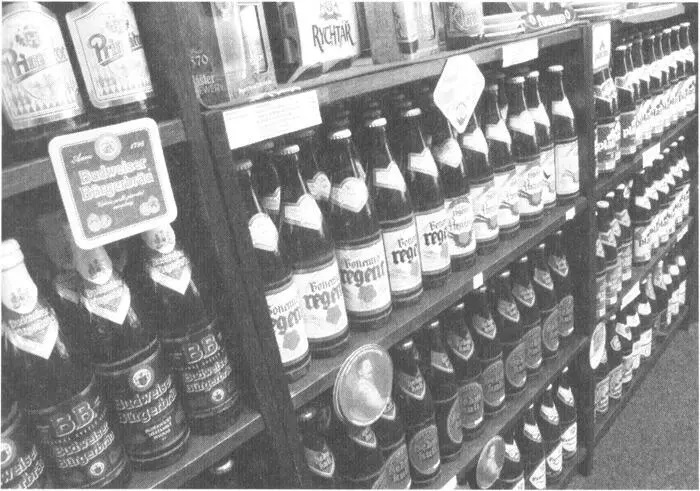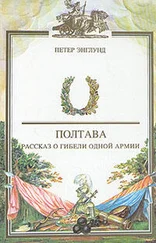Yet in the name of justice, shouldn’t there also be contests for men? Isn’t Czech society, after all, reputed for its egalitarianflair? Well, such contests do exist, even though most of them concentrate more on men’s professional or intellectual abilities than their looks. But Czech chaps who love to dress up and strut on the catwalk needn’t despair. They can always register for the very popular contest Miss Transvestite!
There are absolutely not many nice words to say about Vasil Bil̕ak, the Husák regime’s wily chief ideologist who, in 1968, begged Leonid Brezhnev to come and rape Czechoslovakia (see: Communism). Yet thanks to one of his statements, he is still widely remembered: “Beer is bread to the Czechs!”
The literary brilliance of this judgment can certainly be debated, but it undoubtedly belongs to the very few true-to-life comments the dogmatist ever uttered. In fact, it’s still valid! No other nation on this planet drinks more beer — pivo to the natives — than the Czechs. Statistically, every single inhabitant in this country pours down 322 half-litres of beer annually. Considering that these inhabitants include babies, grandmothers and the evidently-not-too-many adult Czechs who never touch alcohol, the real consumption is by all estimates much more impressive — or depressive, if you happen to be a teetotaller (see: Alcoholics).
The Czechs’ profound and long-lasting love for beer and their globally acknowledged tradition as brewers have convinced a lot of people in this country that the foaming comfort is actually a local invention. The legend even claims that the eleventh century Brabant Duke Jan I (Jan Primus = Gambrinus) was history’s first brewer. This is indeed a slight exaggeration, as archaeological excavations prove that the Sumerians had already got in high spirits by the magic “barley water” some 5,000 years ago.
Still, the Czechs — accompanied by their Western neighbours in Bavaria — can claim the right to several inventions that changed the art of beer brewing forever.
Firstly, they understood sooner than anybody else that “barley water” (both the Czechs and the Bavarians resisted the temptation to experiment with grains other than the one prescribed by the original Sumerian recipe) could be mixed very successfully with hops. And second, thanks to Josef Groll, a Bavarian brewer who was head-hunted to Western Bohemiain 1842, the city of Plzeň (in GermanPilsen) was among the first to start mass production of beer using the “lower” fermentation method, resulting in a product which later has acquired worldwide reputation as Pilsner .
Yet it’s fair to assume that the Czechs have been brewing beer more or less from the moment that the first tribes of Slavs settled in the area between the Elbe and the Vltava, sometime in the sixth century CE. The pan-Slavonic word for beer, pivo , is even closely linked to the word píti (to drink). According to the beer expert Antonín Kratochvíle, the first documentation of brewing in Bohemia is the Foundation Deed of the Vyšehrad Collegiate Church in Prague, dated 1088, which assigns a “tithe of hops” to be delivered to the canon regulars to enable them to brew.
During the following centuries, breweries popped up in several monasteries, where monks produced beer both for their own godly consumption, and for the probably-not-so-pious local noblemen. Beer brewing made considerable headway in the fourteenth century, when the Czech kings established new royal towns with amazing speed all over the country. To secure themselves as much public support as possible, the kings cleverly enough gave respected burghers the privilege to brew beer.
To start with, the burghers produced only for their own consumption, but this individualistic attitude soon proved inefficient. Therefore, they joined forces and employed brewers to make it for them. In other words, the basis of the first modern concessionary breweries was laid.
It was only with the nineteenth century’s technological inventions that Czech beer brewing became a virtual industry and a business. In fact, all members of the current “Big Five” — Prazdroj and Gambrinus in Plzeň, Staropramen in Prague, Budvar in České Budějovice and the Velké Popovice brewery in Central Bohemia — were established around 1850. It’s no coincidence that all of them are situated in Bohemia. In Moravia, people tend to compensate their less-excessive relationship to beer with a correspondingly excessive consumption of local wine.

Photo © Jaroslav Fišer
Now, you might object that several local breweries are marketing their products with the slogan “Brewed in this city from 1575”. Well, they’re certainly not speaking about the same type of beer as the one they produce today. In sixteenth century Bohemia it was, according to the Brewery Museum in Plzeň, not uncommon for brews to be “improved” with the bones of executed criminals, dog’sfaeces, sawdust from dug-up coffins, splinters from scaffolds or other delicacies. Therefore, the only thing a Pilsner beer brewed in, say, 1615, has in common with the light and delicious Prazdroj which is produced today, is the city of Plzeň as its place of origin, and barley and hops as its raw materials.
By the beginning of the twentieth century, the Czechs had emerged as the Austro- HungarianEmpire’s ultimate beer nation. Of the 1,050 breweries that were operating in the entire empire in 1912, 666 were situated in Bohemia, Moravia or Silesia. After the founding of Czechoslovakia, the number of breweries started to decrease (by 1937, there were 374 left), but, due to rapid modernization, production steadily increased. Obviously, not only thirsty Czechs benefited from the larger brewing capacity. In the 1920s, Czech beer exports skyrocketed, which hugely contributed to making the young republic visible on the global market.
There’s not much to say about the unlucky combination of Czech beer brewing and communism. By 1948, all breweries were nationalized and the management centralized, which inevitably led to poorer quality. As late as in the 1980s, when people were shopping for beer in their local grocery, it was perfectly common to turn every bottle upside-down to check that it didn’t contain deposits or other filthy things.
The Bolsheviks, however, by no means prevented the Czechs from flocking to their hospodas and drinking their beer as they always have. Actually, cheap and relatively tasty beer was one of the main enticements with which the communist regime bought support from the broad masses. Before 1989, some pundits even considered a dramatic hike in the price of beer to be among the few things that could make the Czechs revolt against the communists (see: Velvet Revolution).
As in almost all other fields of society, the fall of communism also had a positive impact on the breweries. With the exception of Budvar in České Budějovice, all members of the “Big Five” have been privatised (several of them, such as Prazdroj in Plzeň, by foreigners), and this also goes for the vast majority of the small- and medium-sized breweries. There have also been some new ones established, most of them microbreweries, so currently, the Czech Republic can boast about 84 breweries with total production approximating 19 million hectolitres. If this doesn’t say anything to you, just try to imagine some 3.8 billion pints in a row...
Now, let’s have a look at the practical part of this foamy subject.
If beer drinking is not a national sport (see: Beauty Contests; Ice Hockey), then at least it is a basic part both of the Czech lifestyle and traditional Czech cuisine. In fact, there are those natives who even consider beer to be a soft drink. A doctor, whom the author of this manual once visited, claimed in dead earnestness that fewer than four pints of beer does not count as alcohol. Some of his foreign colleagues might disagree about that, but he still had a point: about 60 percent of the beer consumed in the Czech Republic is of low gravity (ca. 3 percent alcohol), while stronger beer, popular, for instance, in Belgium, is more or less unknown.
Читать дальше









![Theresa Cheung - The Dream Dictionary from A to Z [Revised edition] - The Ultimate A–Z to Interpret the Secrets of Your Dreams](/books/692092/theresa-cheung-the-dream-dictionary-from-a-to-z-r-thumb.webp)



